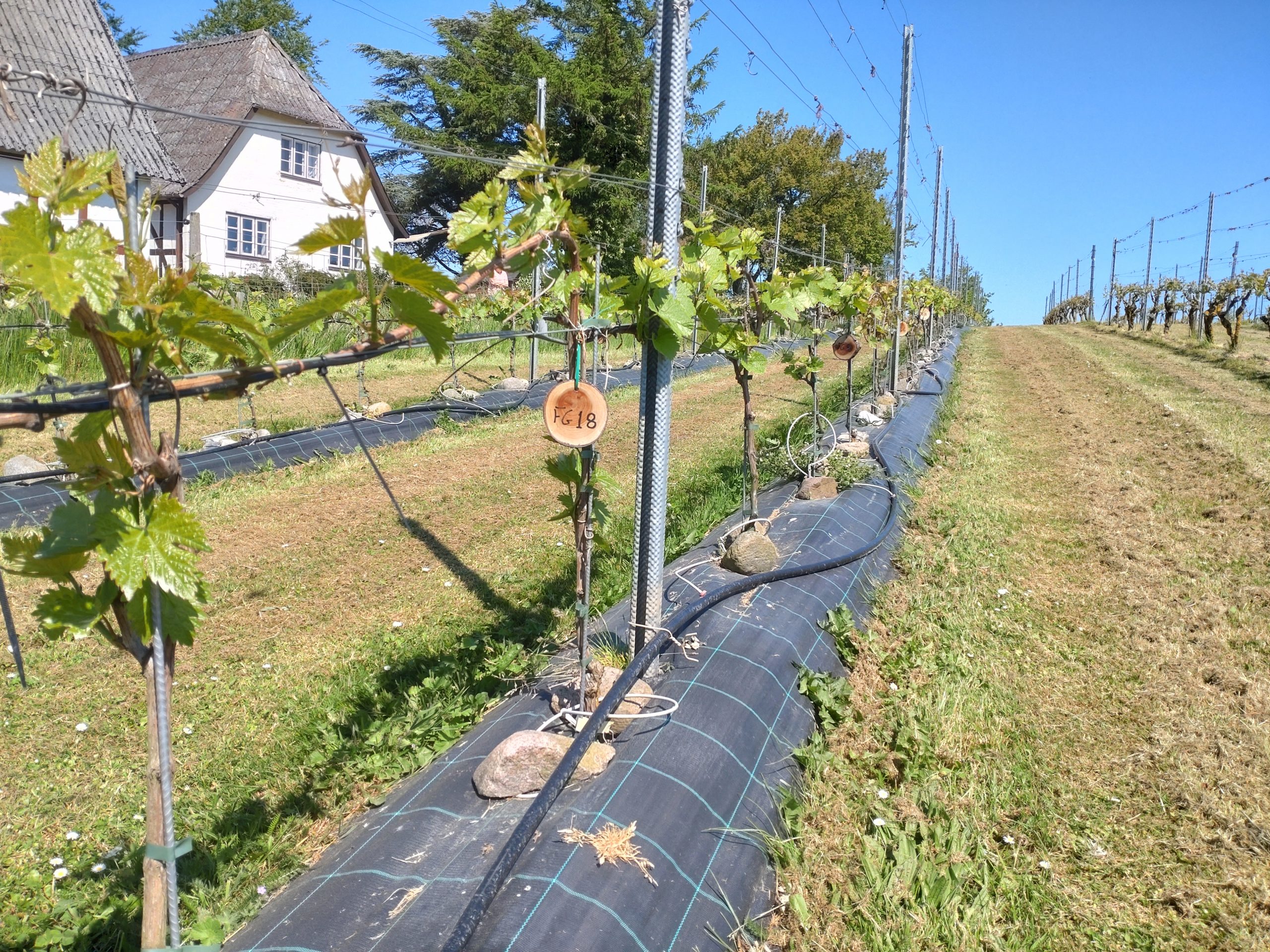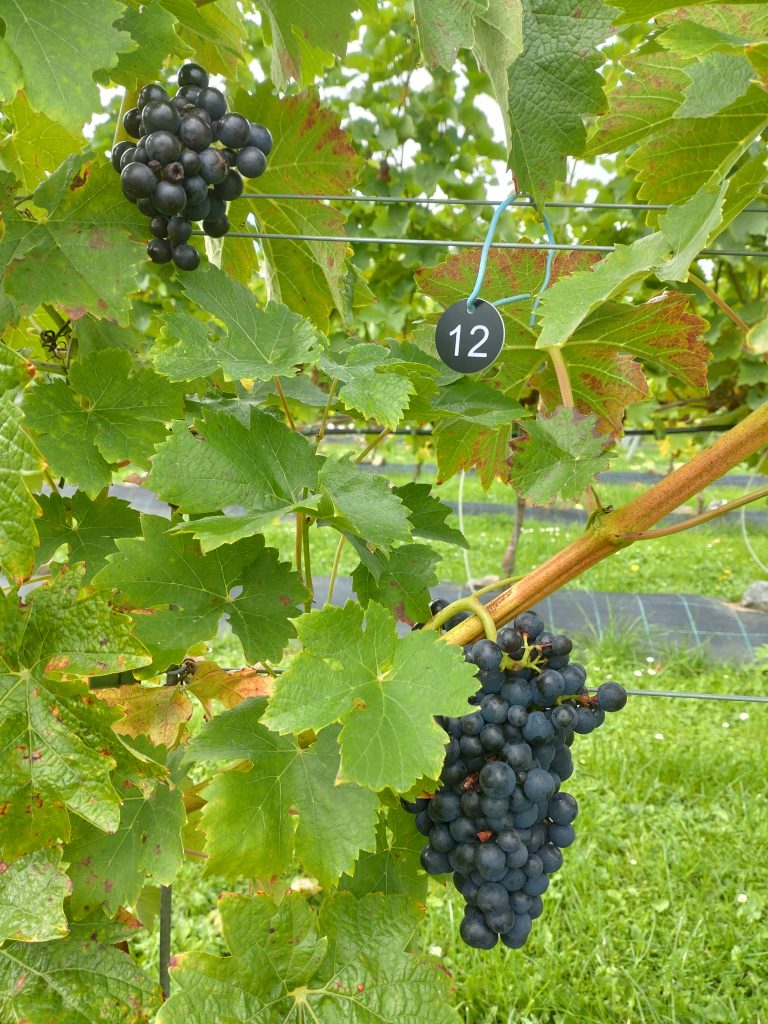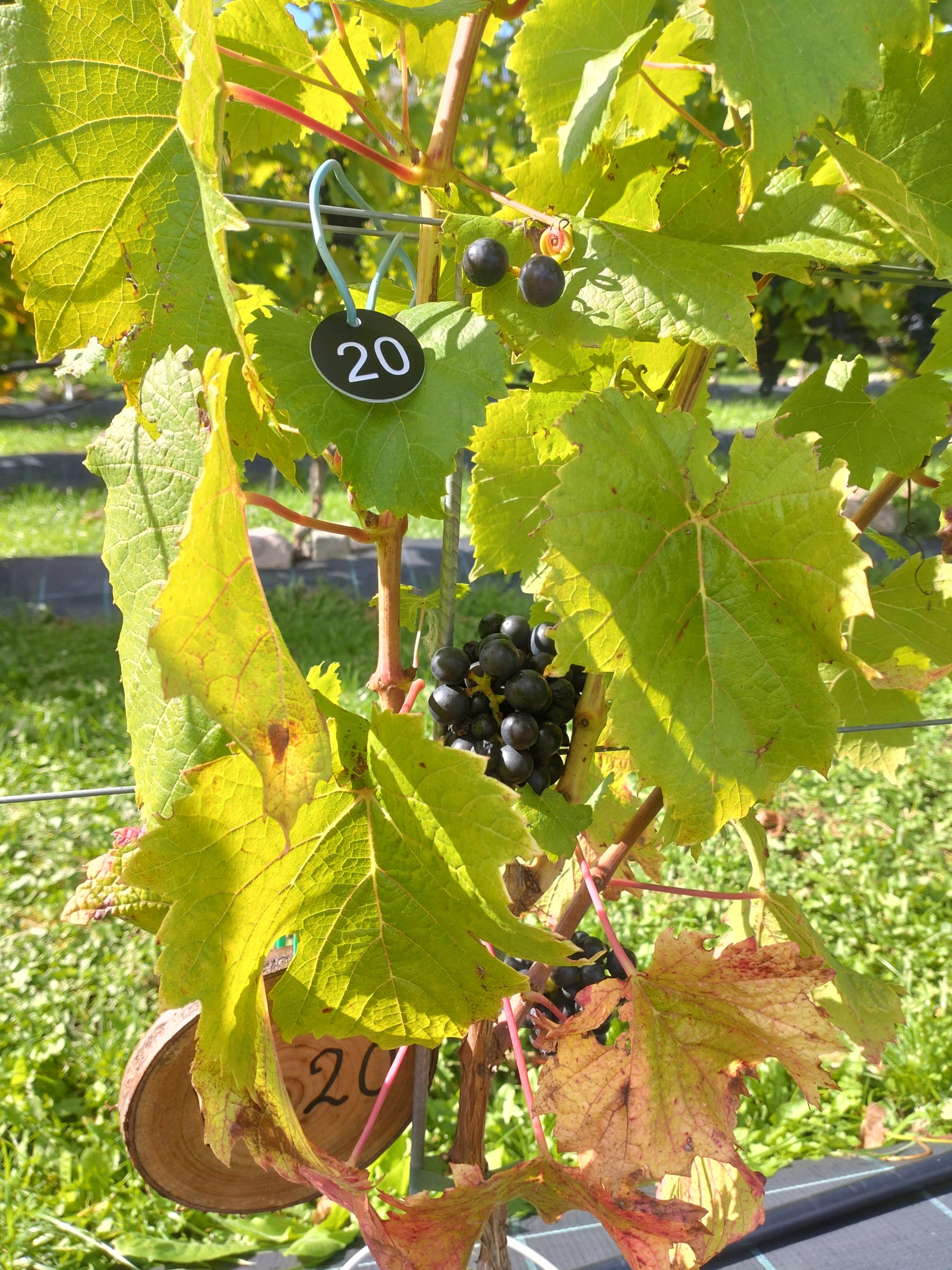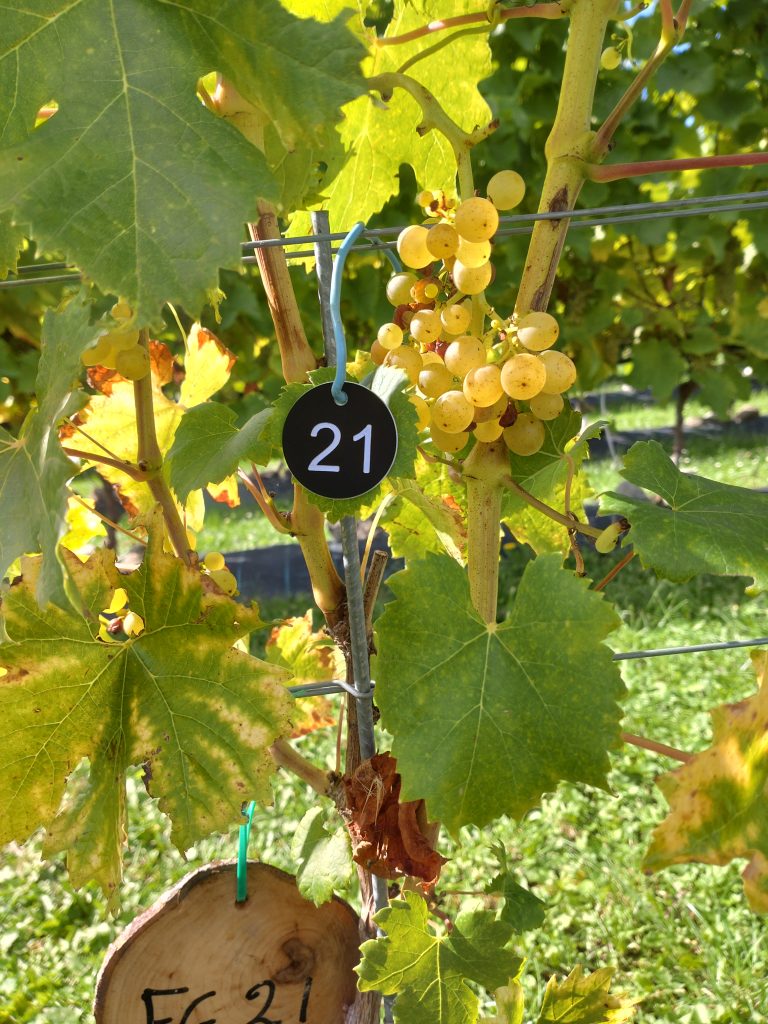Udvikling af nye druesorter til ‘cold climate’
Torben har siden 2020 haft et samarbejde med Julius Kühn Instituttet (JKI) i Tyskland om udvikling af en serie nye druesorter til det skandinaviske klima.
Se mere om projektet i Torbens artikler i Vinpressen:
1) “Modner de sorter, vi dyrker tilstrækkeligt godt”: Vinpressen 2020-2
2) “Udvikling af nye sorter til skandinavisk vinavl”: Vinpressen 2020-5
3) “Økonomi i udvikling af nye sorter”: Vinpressen 2020-6
4) “De første sensoriske vurderinger af forsøgsvine”: Vinpressen 2021-6
5) “Symposium om drueforædling”: Vinpressen 2022-6
6) “Nye druesorter status 2022 – De skarpe kanter”: Vinpressen 2022-6 (Søren K. Nielsen)
7) “Åbent hus på Vrangbækgaard 2023”: Vinpressen 2023-5 (Søren K. Nielsen)
8) “Jagten på nye nordiske druesorter 2023”: Vinpressen 2023-6
9) “New Grapes for the Future”. Project status 2024 for FastGrapes: (English poster)
‘FastGrapes’
Projektet, der kaldes “FastGrapes”, er nu så langt, at de første udplantninger af de udvalgte druer er foretaget 10 steder i hhv. Sydsverige, Sjælland, Fyn, Nordjylland og Nordtyskland samt hos JKI i Rheinland-Pfalz i foråret 2022.
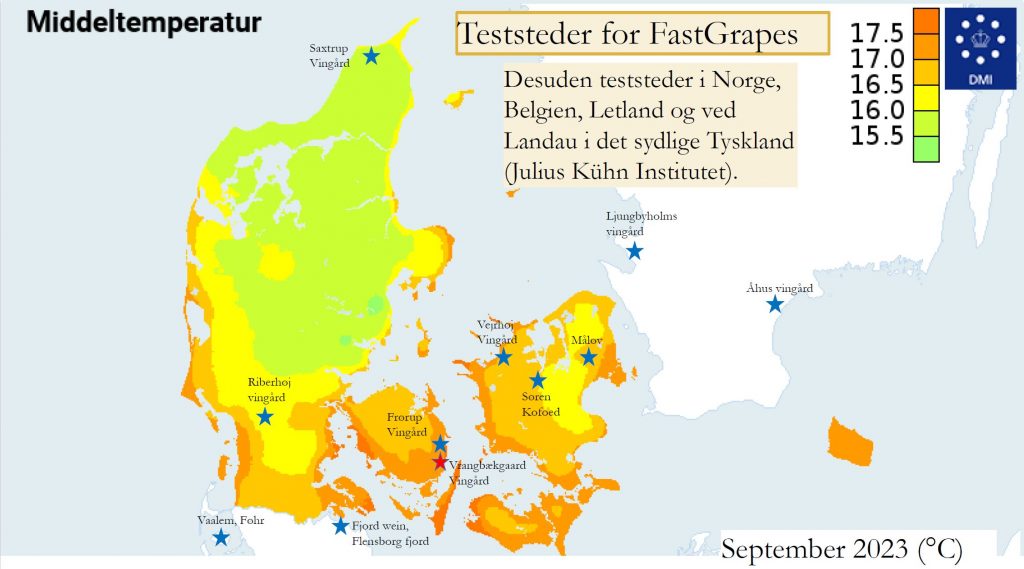
Det ene sted er vores vinmark her på Fyn, hvor vi således som de første kan følge med i udviklingen af fremtidens druesorter.
Vi har alle de første 25 nye sorter fordelt på 230 planter dvs en 8-10 stykker af hver (plantet 2022). Derefter de 10 næste sortner plantet 2023 og yderligere 10 sorter i 2024, og i 2025 kommer yderligere sorter til. Herefter starter arbejdet med at udvælge de bedste sorter.
Mellem de nye sorter er der plantet et antal solaris som referencesort, således at vi ikke skal sammenligne de nye sorters udvikling med gamle etablerede solarisplanter, men hele vejen kan sammenligne med solaris på helt samme udviklingstrin.
Håbet er naturligvis, at der blandt forsøgssorterne gemmer sig fremtidens efterfølgere til Cabernet Sauvignon og Pinot Noir, så vi også i Danmark vil kunne lave fremragende rødvin. Og udvalget af fuldmodne grønne druer må også gerne udvides med flere spændende smagsvarianter til følge end ‘kun’ solaris. 🙂
Krydsning og sortsudvælgelse ved JKI
Ved Julius Kühn Instituttet startes med tusindvis af krydsninger af udvalgte forældresorter, der i drivhuset udvælges for deres resistens for en række sygdomme. De overlevende planter vurderes herefter for deres dyrkningsmæssige egenskaber og til sidst for vinkvaliteten, vurderet ved at lave mikro-vinificering af druerne fra de enkelte planter. Først herefter kan det komme på tale at starte tests af de udvalgte sorter hos eksterne vinavlere.
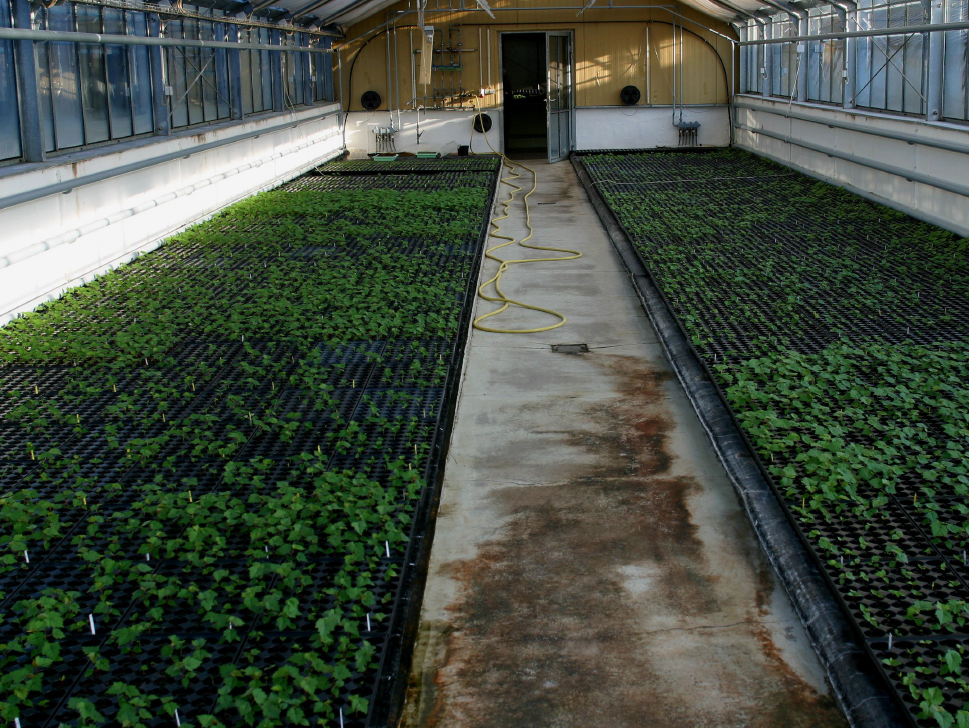
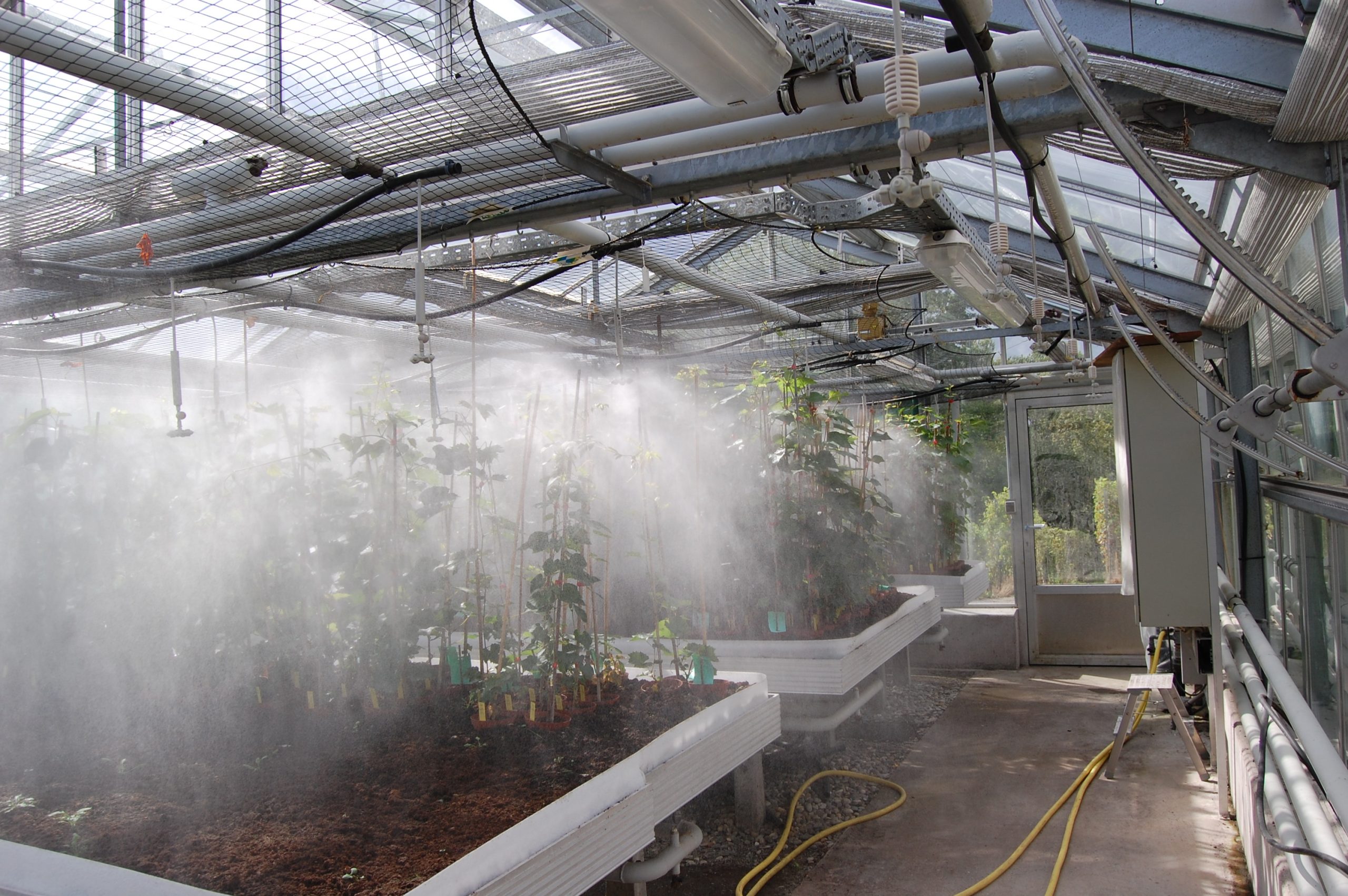
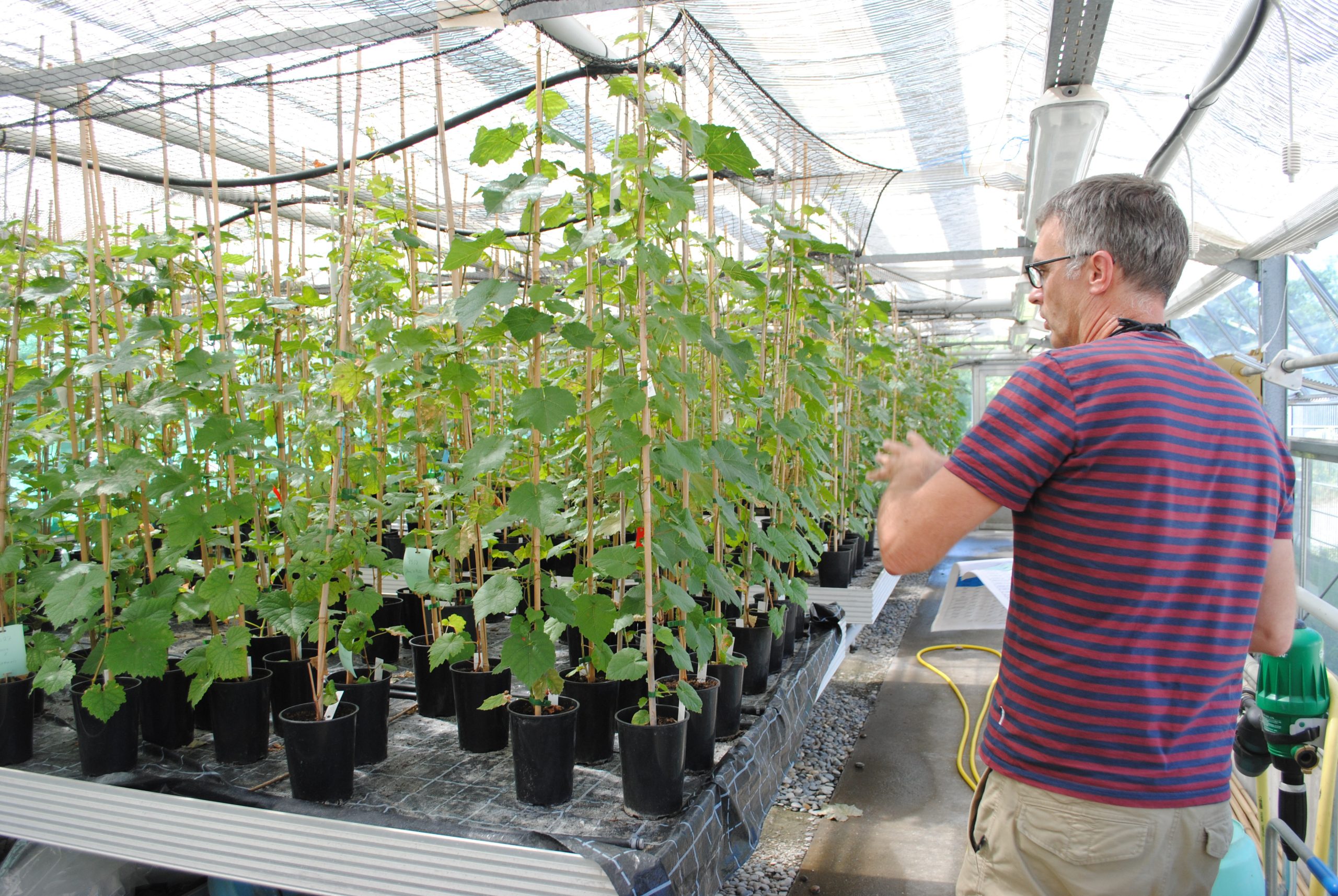
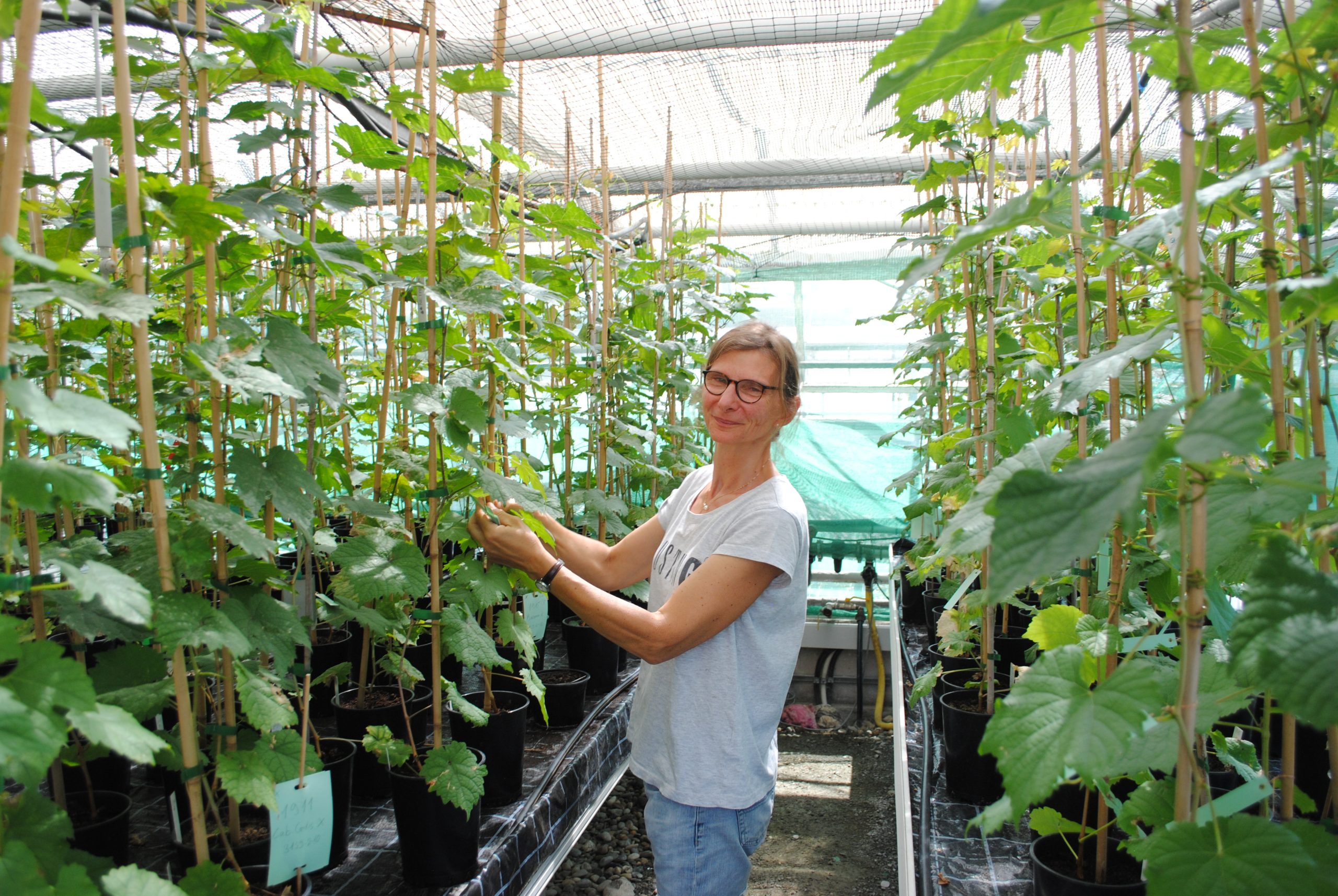
‘FastGrapes’ udvælgelser af tidligt modnende sorter
Efter planterne har overlevet så langt i processen, bliver de plantet ud på friland, hvor de skal vise, hvordan de klarer sig udsat for vejr og vind. Når planterne efter nogle år er ude af juvenilfasen og klar til den første høst, bliver de vurderet for generel sundhed, frugtsætning og modenhed. Her er det så, at FastGrapes har fået lov af JKI til at evaluere planterne et par uger, før JKI selv gør det. Derved kan FastGrapes finde og udvælge de planter, der modner et par uger før de planter, der ellers udvælges efter det normale høst tidspunkt i Tyskland.
Herved håber FastGrapes at finde frem til nogle nye robuste druesorter, der kan opnå fuld modenhed på skandinaviske breddegrader.
Denne udvælgelse er grundigt beskrevet i de vedhæftede artikler i Vinpressen. Og herefter er de udvalgte 25 sorter blevet opformeret i en planteskole til de ca. 1000 podede barrodsplanter, der nu er sendt til udplantning og vurdering hos udvalgte vinavlere i Danmark, Sverige og Nordtyskland. I løbet af de næste par år, vil planterne blive vurderet i de rigtige omgivelser, og antallet skal til sidst reduceres til en håndfuld af de allerbedste sorter, der til sidst skal registreres som nye druesorter og sættes i produktion til generelt salg i planteskolerne.
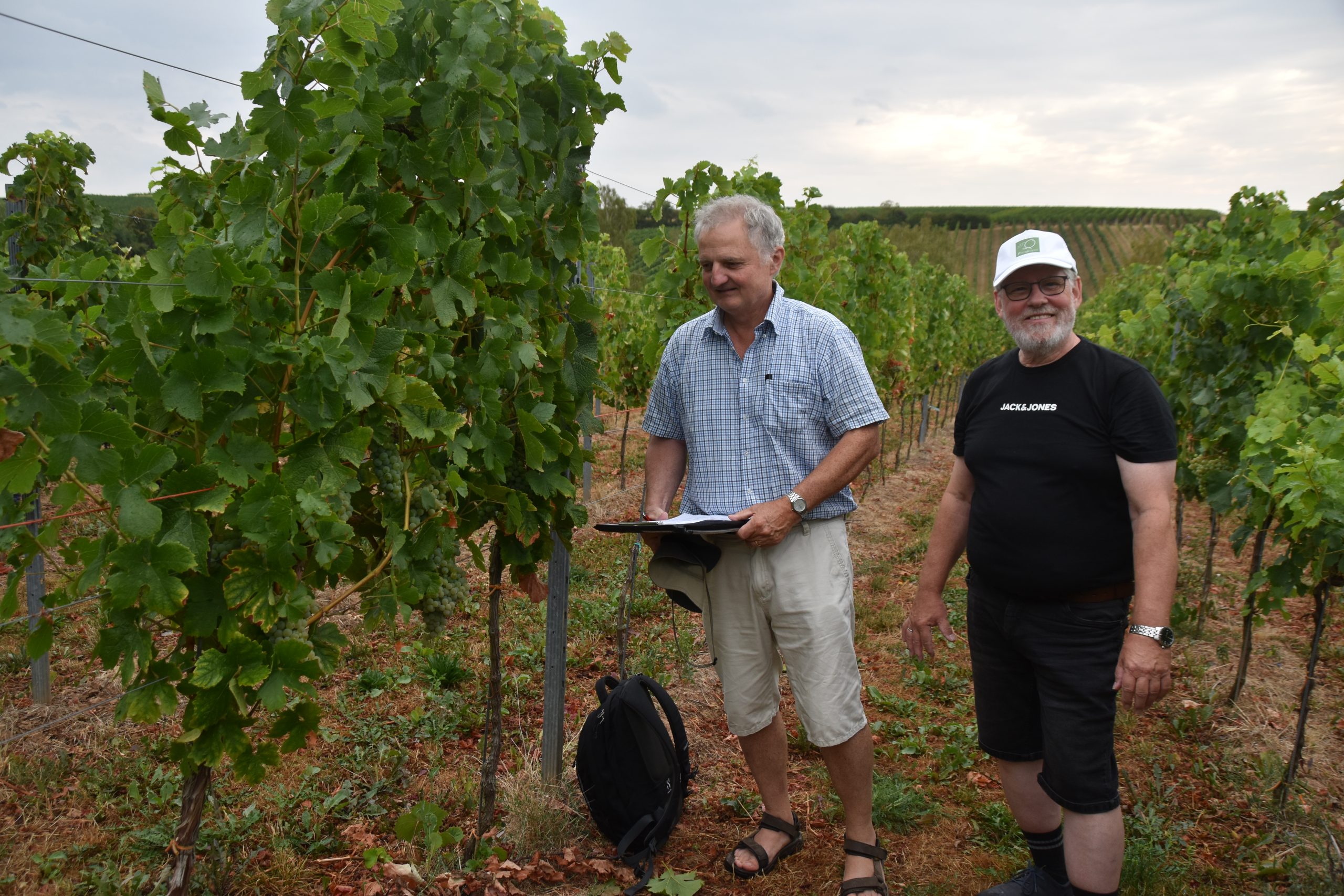
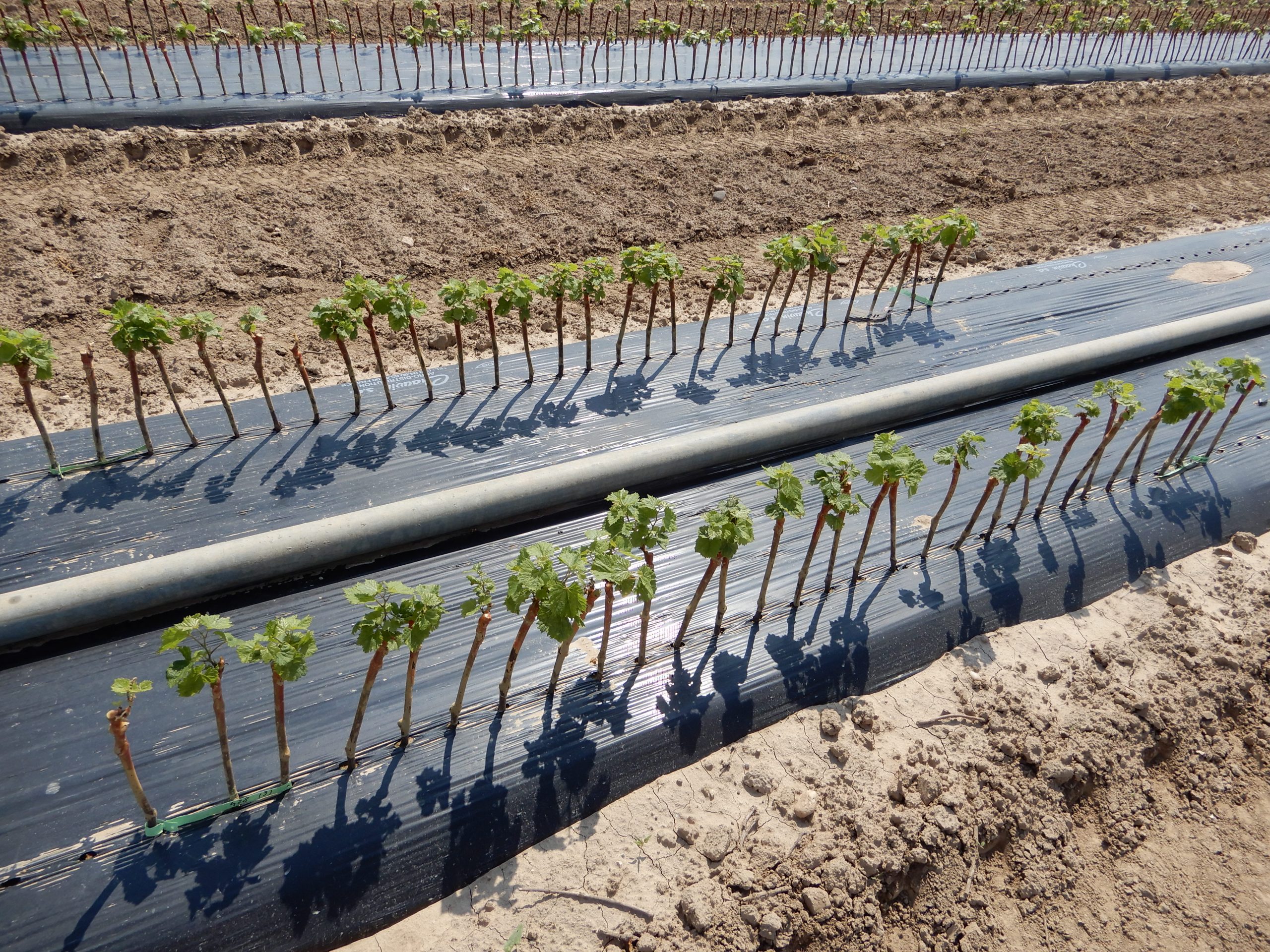
De første udplantninger i Danmark
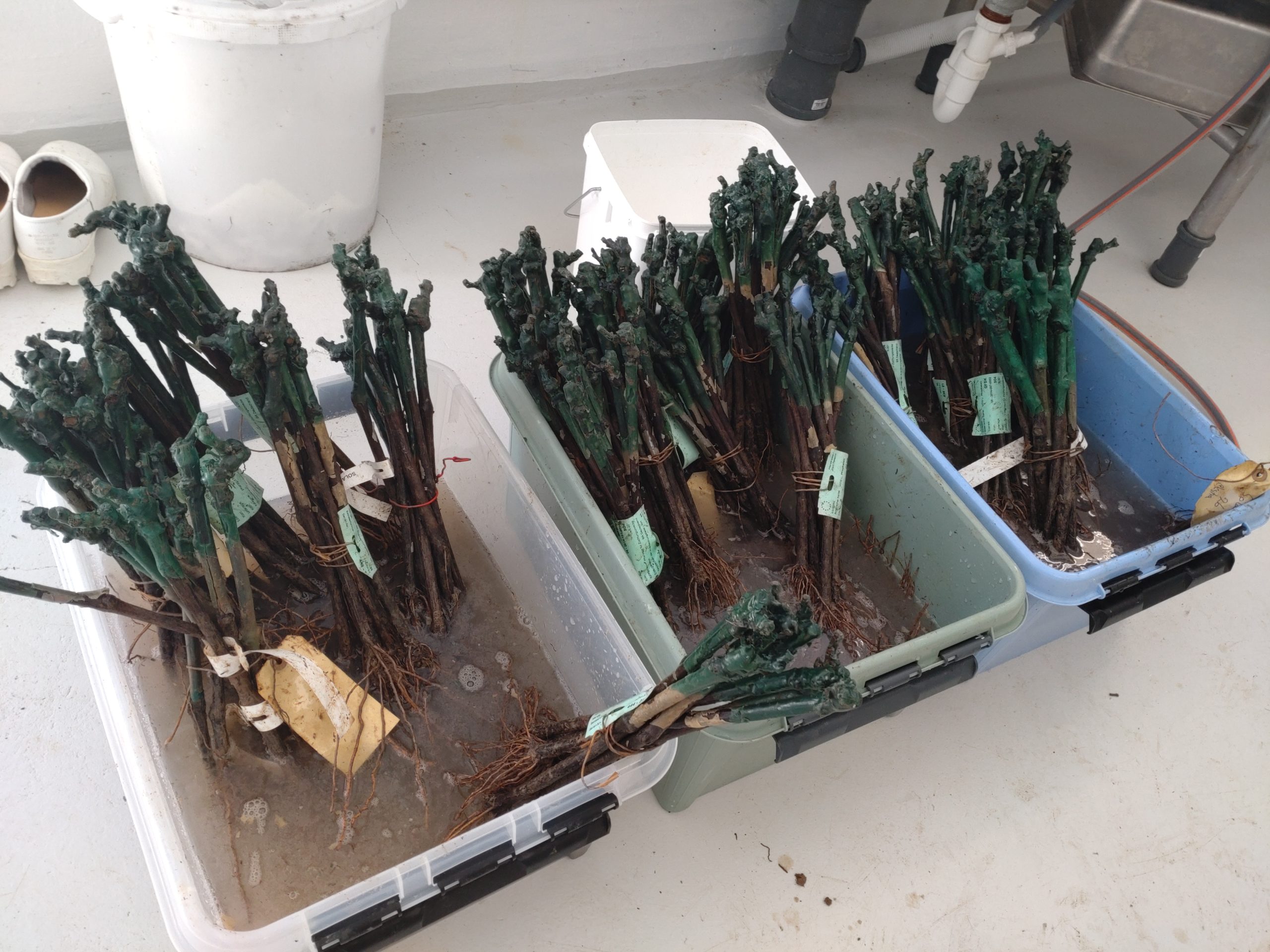
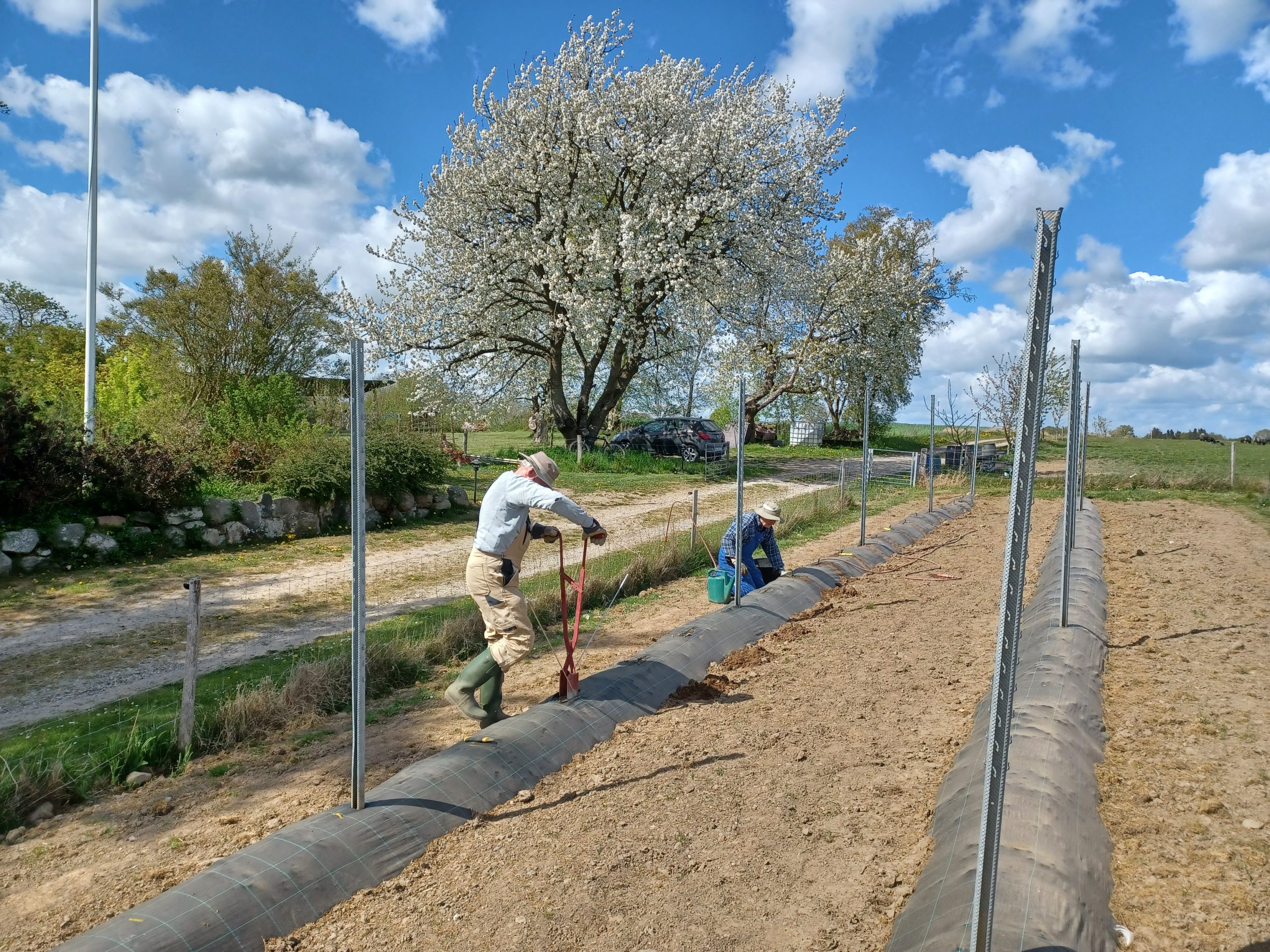
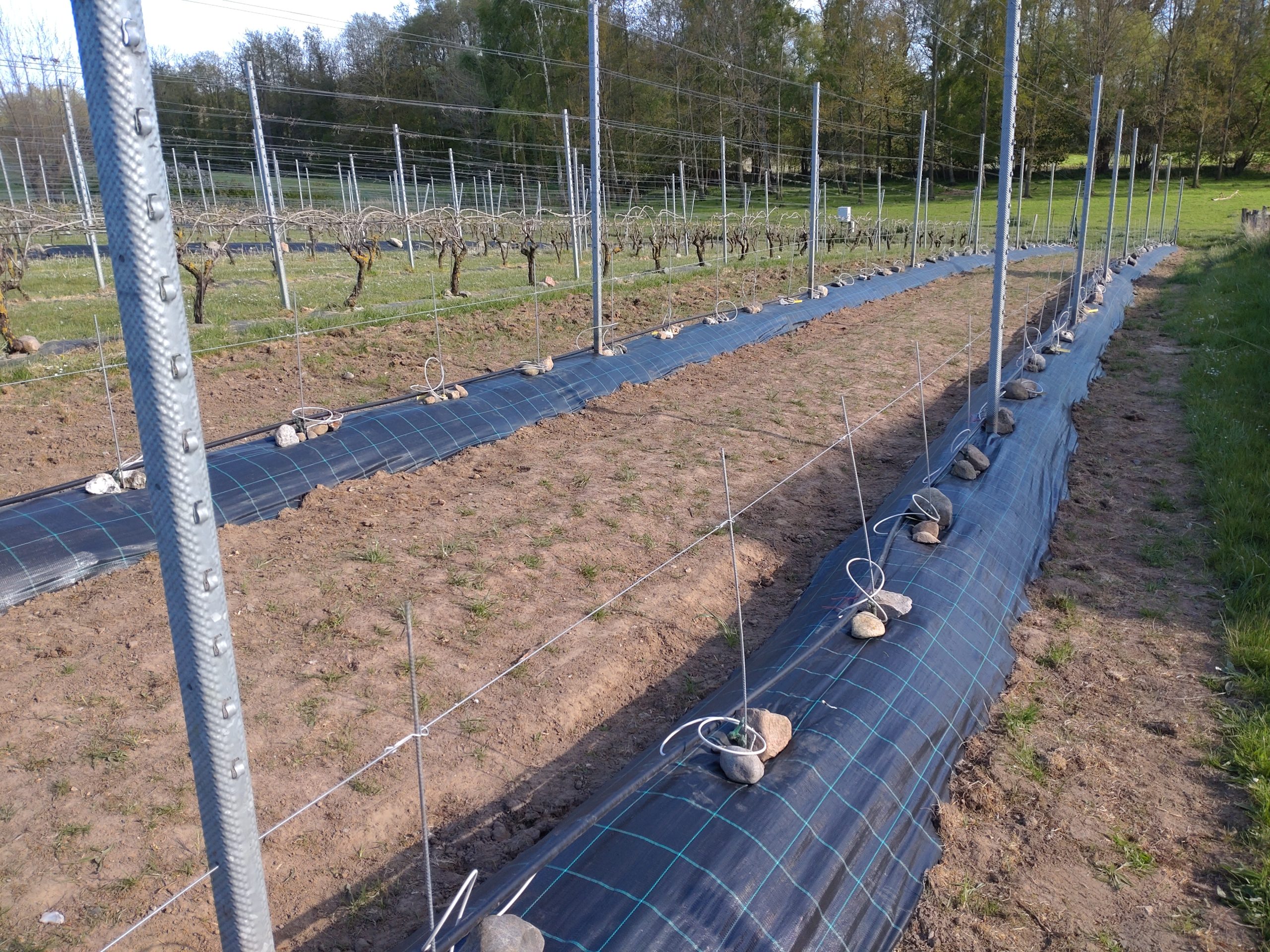
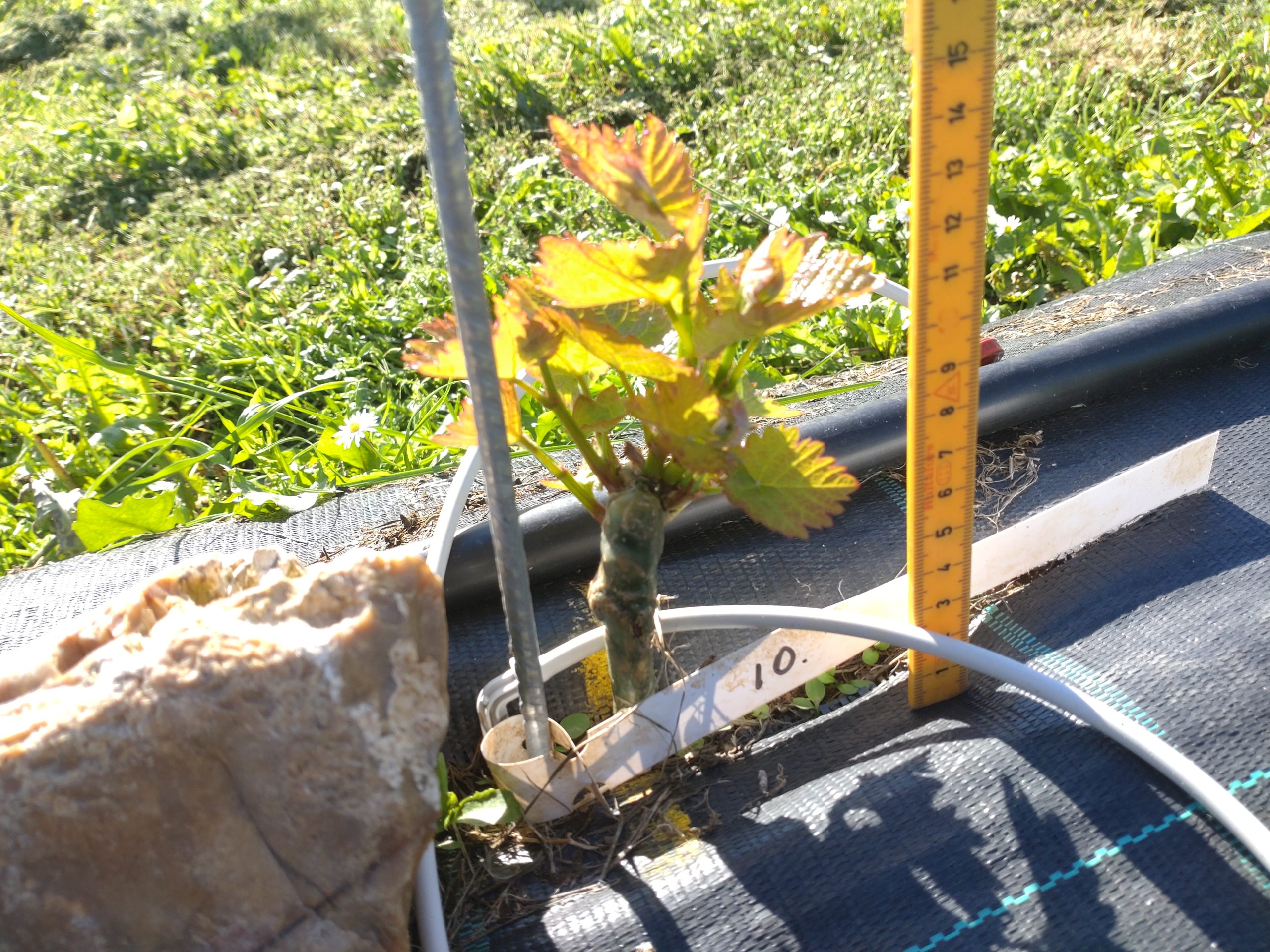
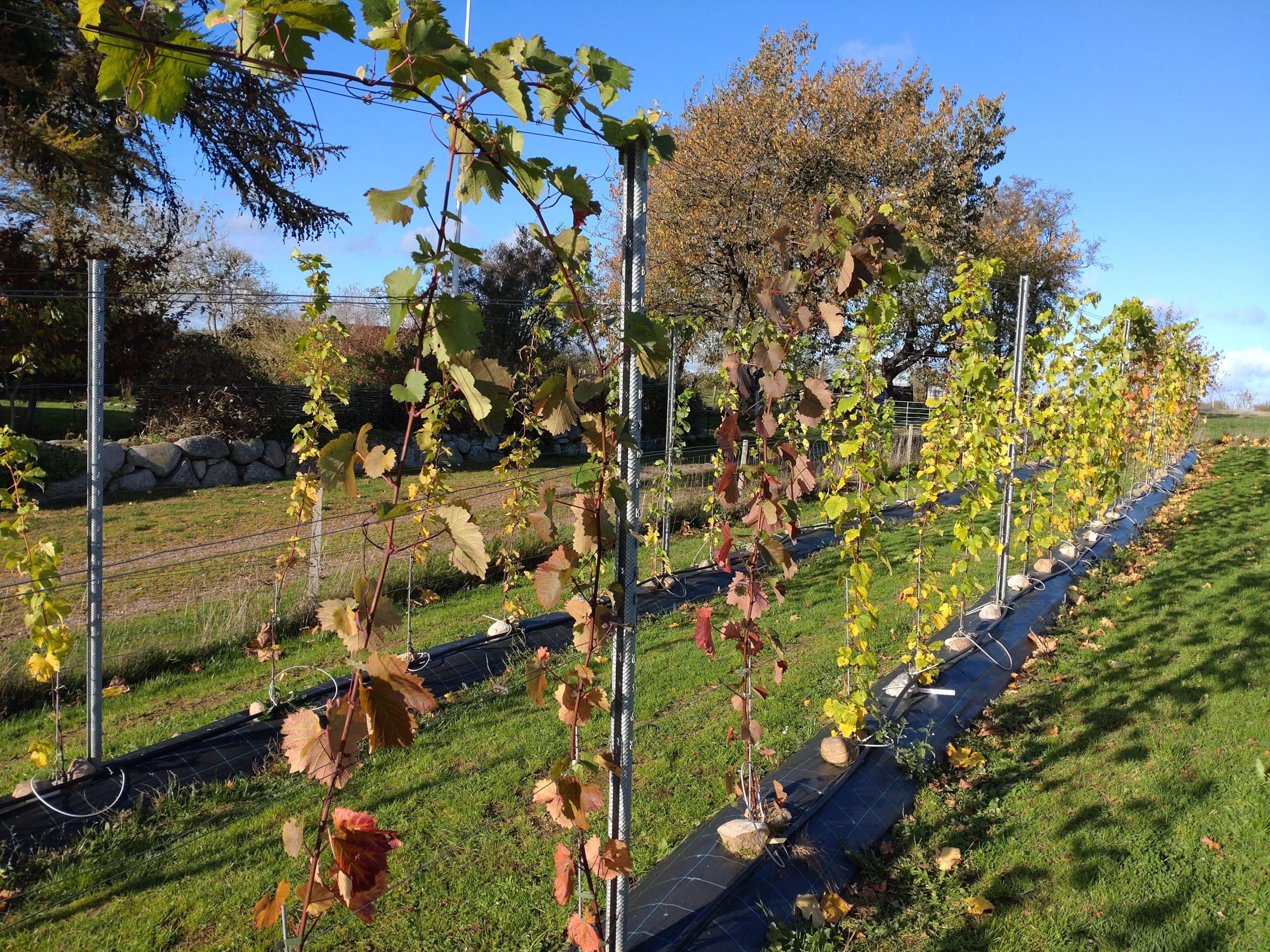
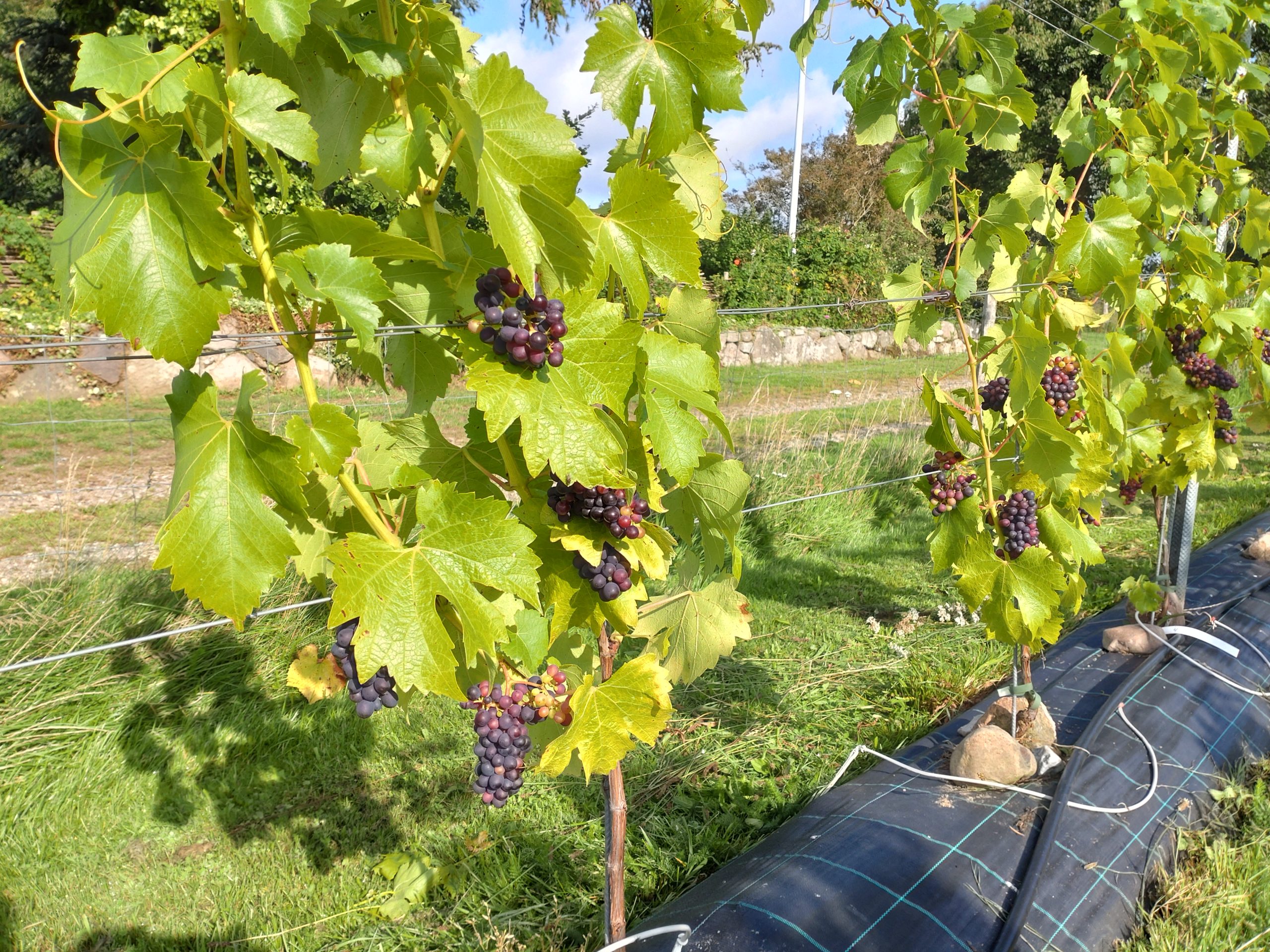
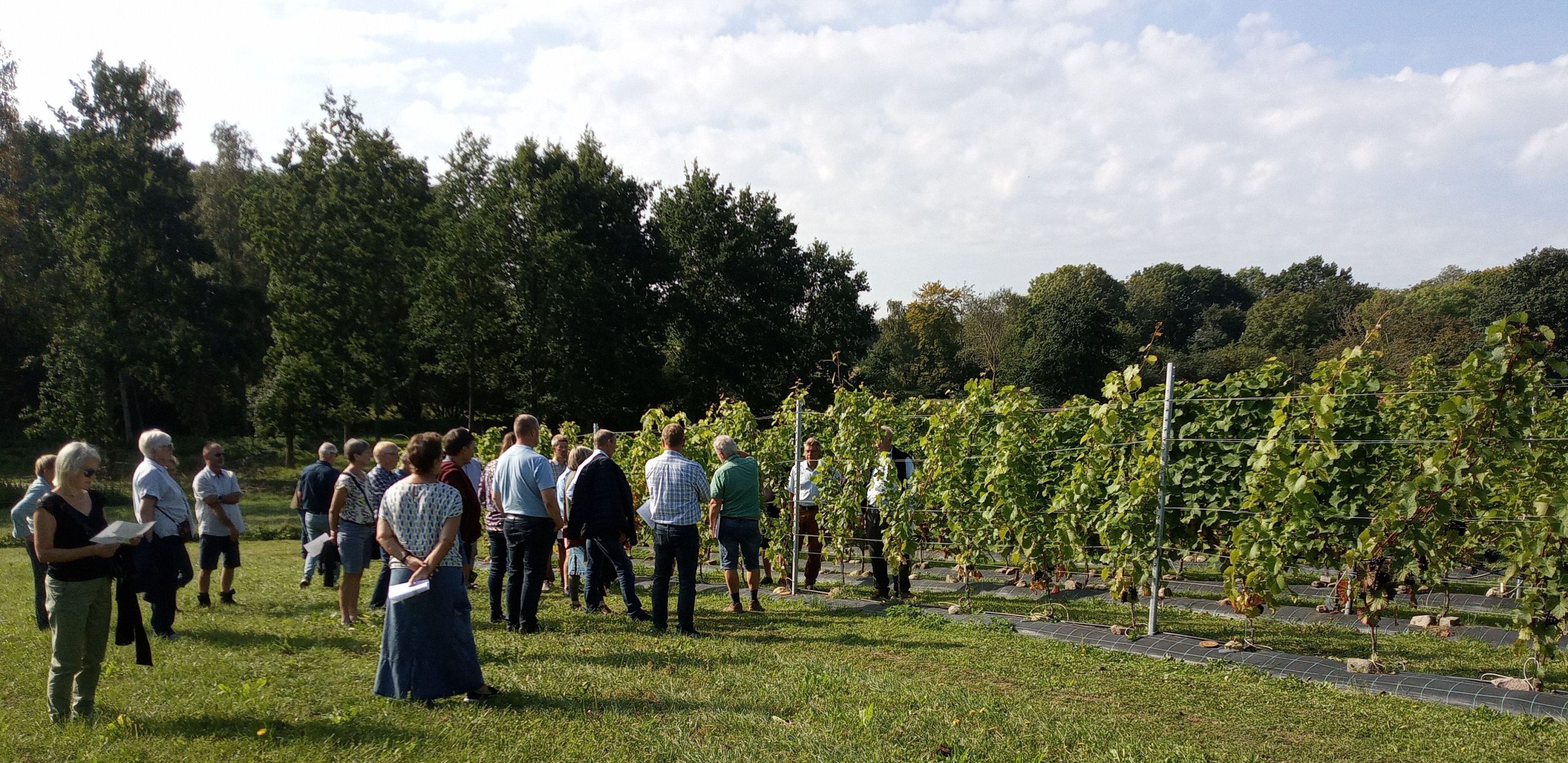
De første 25 prøvesorter
Ikke alle sorter bærer lige meget frugt denne første sæson, men der er dog nok til at lave løbende modenheds-målinger hen over sæsonen til hjælp for den endelige udvælgelse. En af sorterne (FG14) skilte sig tidligt ud, da den blev angrebet af hvepse midt i august, længe før hvepsene interesserede sig for nogle af de andre druer i marken. Det er jo også en indikation for tidlig modning. Den overvejer vi at få afprøvet i Norge.
De planter, hvor der er mest frugt, vil vi prøve at lave en mikro vinificering på, så vi kan få et tidligt indtryk af hvilke smagskvaliteter, de har.
Kør til højre og venstre i galleriet nedenfor. (September 2023)
Modenhedsmålinger efter 1. sæson
I løbet af ugerne op til høstdatoen 1. oktober blev der løbende lavet målinger på sukkerindhold (°Oechle) og syre. I tabellerne nedenfor kan slutresultaterne ses for både de grønne og blå druer.
Til sammenligning opnåede referencesorten ‘Solaris’ (grøn) 104 °Oe, mens ‘Muscaris’ (grøn) opnåede kun 65 °Oe og ‘Bolero’ (blå) opnåede 61 °Oe på samme høstdato.
Som det ses, opnåede 3 grønne og 1 blå niveauer mellem 98 og 107 °Oe og præsterede dermed en modenhed sammenlignelig med Solaris – dyrket i Danmark. Og yderligere 3 grønne og 5 blå fulgte tæt efter mellem 85 og 95 °Oe, hvilket også er flotte tal sammenligneligt med de almindeligt dyrkede druer i Danmark.
Syreniveauet lå generelt på fine niveauer mellem 5 og 8 g/l. Og det var således kun nogle få af de første FastGrapes selektioner, der faldt udenfor de forventede niveauer for modenhed.
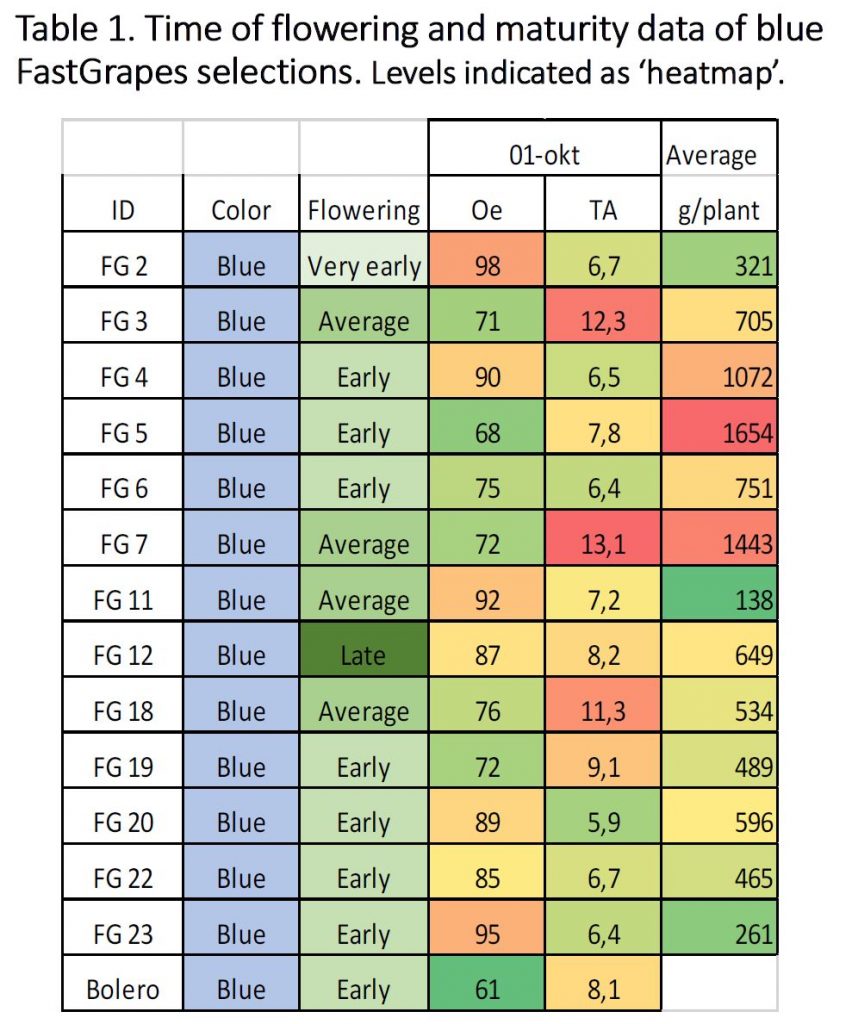
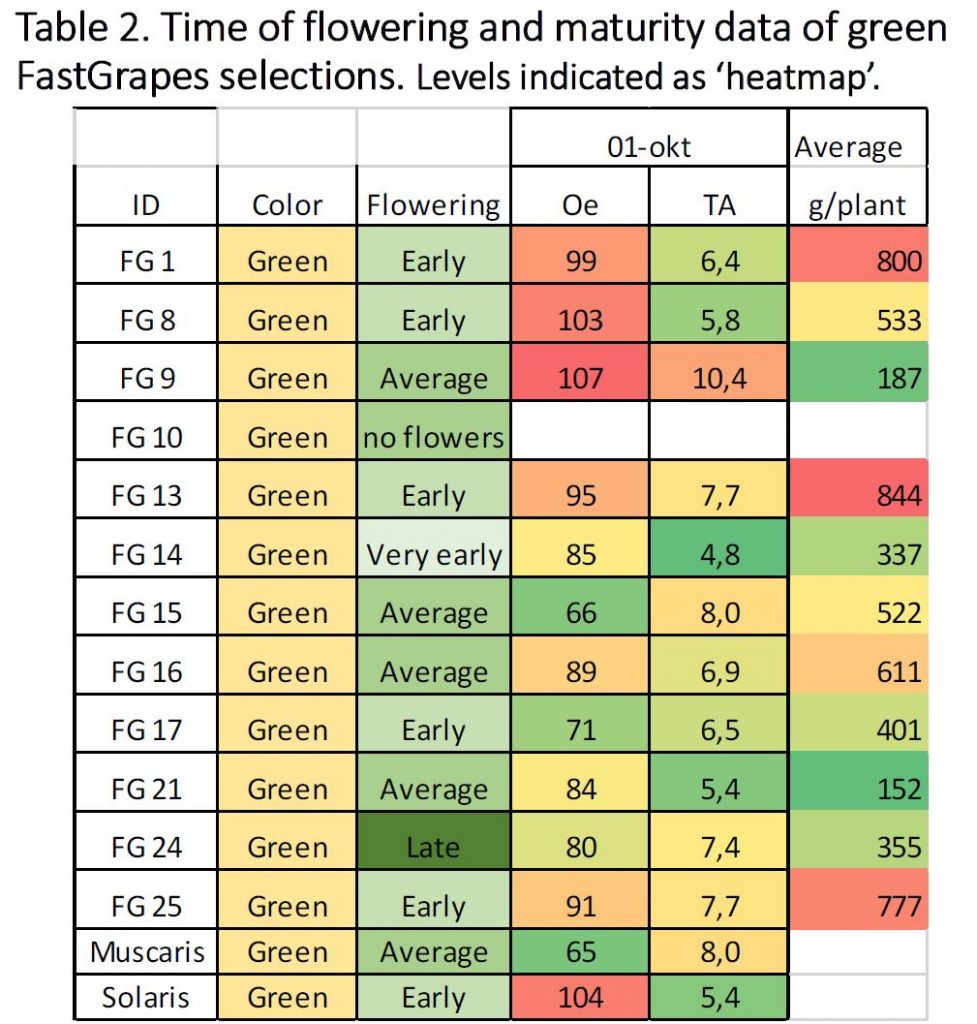
Planteafstanden er 0,9m x 2,75m. Alle planter er på SO4 grundstammer. De planter med højest udbytte gav ca. 1,5 kg pr plante, mens de fleste gav omkring 0,5 kg pr plante.
Dette er kun sæson 2, hvor de første 25 sorter kun fik lov til at bære frugt for at kunne få nogle tidlige modenhedsmålinger. Næste sæson (2024) vil planterne skulle bære den første frugtranke, så de kan give en rigtig høst. Samtidig vil de næste 10 selektioner begynde at kunne sætte de første druer – og yderligere 10 nye selektioner vil blive plantet.
Den foreløbige konklusion er, at nogenlunde lige mange (4-5) grønne og blå testsorter ud af de første 25 viser tegn på at kunne opnå en modenhed svarende til ‘Solaris’, og dermed ser det realistisk ud, at FastGrapes kan nå i mål med at udvikle nye druesorter til det nordiske klima, så vi inden længe kan producere både fremragende hvidvine fra Danmark, – og forhåbentlig også flotte rødvine. 🙂
Frugtranker etableres til den første høst
